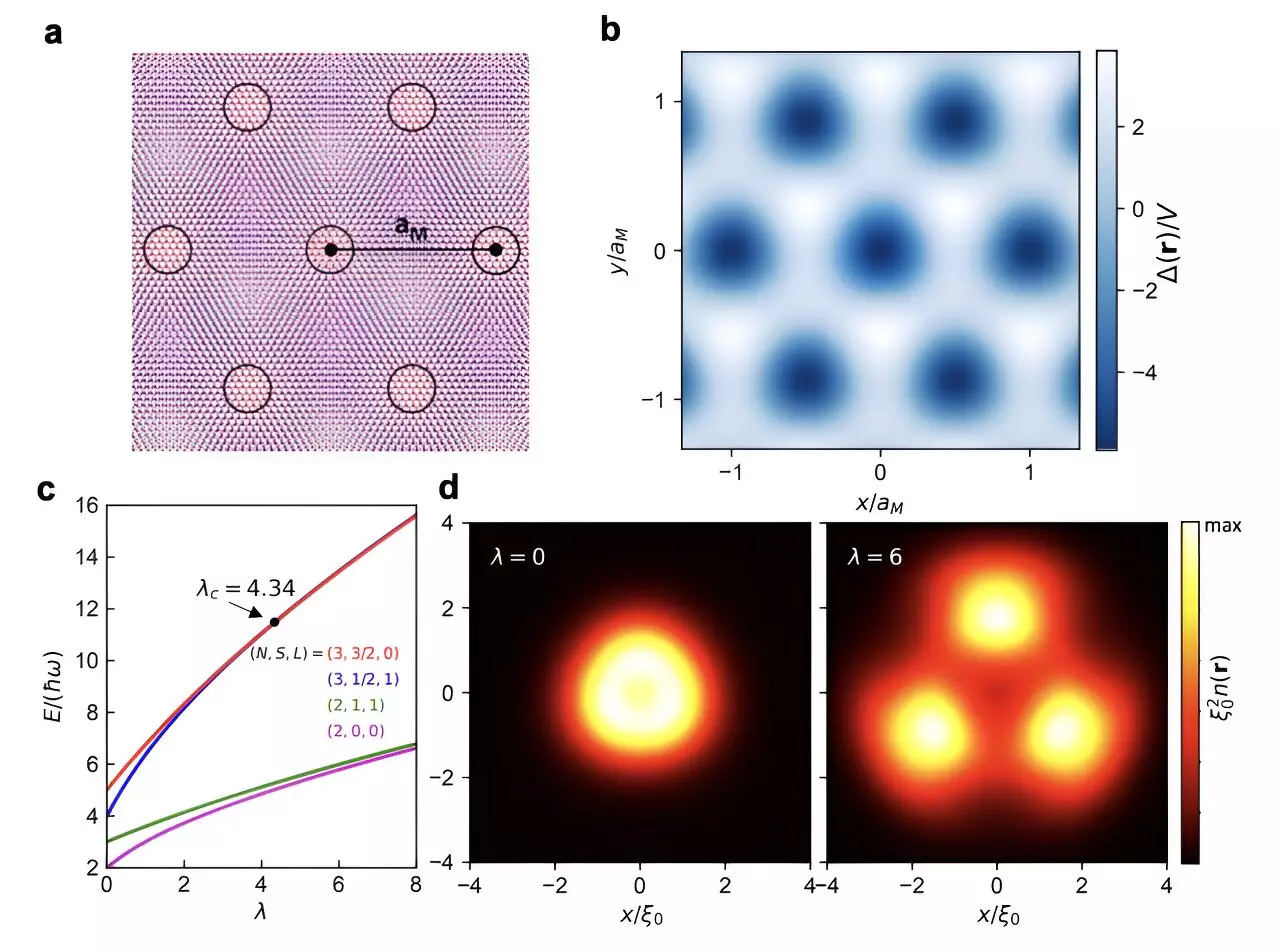Semiconductor moiré superlattices have become a subject of great interest in the study of correlated electron states and quantum physics phenomena. Recently, researchers at Massachusetts Institute of Technology (MIT) conducted a study to further explore these material structures and their underlying physics. Published in Physical Review Letters, their paper introduces a new theoretical framework that could help understand large-period moiré superlattices characterized by weakly interacting electrons residing in different potential wells.
Semiconducting moiré superlattices offer several advantages for experimental manipulation. Physicists can easily control the density of electrons within these structures, consequently altering the properties of their many-electron ground state. While most previous studies have focused on the case of one or fewer electrons per moiré unit cell, the researchers aimed to explore the multi-electron regime to uncover any new findings.
Predicting the behavior of multi-electron materials can be challenging due to the competing energy scales present in these systems. Kinetic energy favors an electron liquid, while interaction and potential energy favor an electron solid. To tackle this complexity, the researchers developed a theoretical framework that focuses on the behavior of individual atoms in the moiré superlattice, taking advantage of the tunability of energy scales by varying the moiré period.
Using their theoretical framework, the researchers discovered new physics that can be observed in multi-electron semiconductor-based moiré superlattices. At a filling factor n=3, where each moiré atom contains three electrons, Coulomb interactions led to the formation of a “Wigner molecule.” Moreover, under specific circumstances where the size of these Wigner molecules is comparable to the moiré period, they can form an emergent Kagome lattice.
The results of this research provide insight into self-organized electron configurations and their potential impact on studying charge order and quantum magnetism in unconventional materials. The predicted Wigner solid formation has already been confirmed experimentally. The researchers plan to further investigate the quantum phase transition between Wigner electron solids and electron liquids in the near future.
The study conducted by MIT researchers introduces a new theoretical framework for studying large-period moiré superlattices. By focusing on the behavior of individual atoms in the superlattice, they were able to uncover new physics, such as the formation of Wigner molecules and emergent Kagome lattices. These findings open up opportunities for further exploration and inspire future studies in charge order and quantum magnetism. The tunable nature of semiconductor moiré superlattices presents exciting possibilities for manipulating material properties and advancing our understanding of quantum physics phenomena.


Leave a Reply